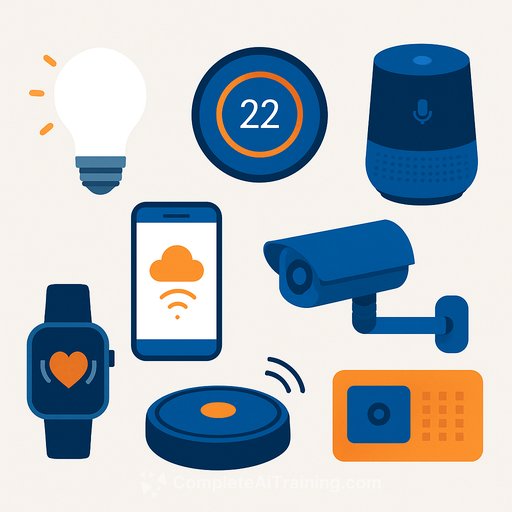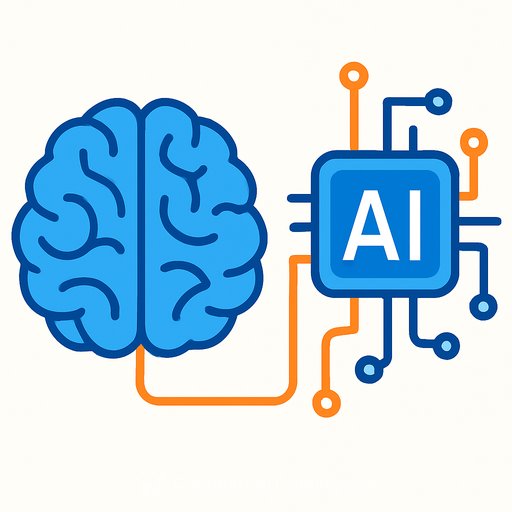Unobtrusive Physical AI: Everyday Objects That Sense, Think, and Move
A stapler that rolls to your hand. A lamp that tilts when you start reading. A chair that eases your posture on its own. Researchers at Carnegie Mellon University's Human-Computer Interaction Institute (HCII) are turning that into standard behavior for ordinary objects.
Their approach, called unobtrusive physical AI, favors quiet, context-aware assistance over flashy robots or voice commands. The aim: make help automatic, accurate, and nearly invisible.
From Smart Devices to Intelligent Objects
Led by Assistant Professor Alexandra Ion, the Interactive Structures Lab merges robotics, large language models (LLMs), and computer vision to give everyday objects the ability to think and move. Mugs, utensils, plates, and trivets ride on tiny wheeled bases that reposition themselves across surfaces.
An overhead camera scans the scene and identifies people and objects in real time. Visual signals are converted into text that an LLM can reason over. The model anticipates what a person may need next and commands nearby objects to assist. "The user doesn't have to tell the object to perform something," said Ion. "It understands what has to be done and does it automatically."
Doctoral student Violet Han adds the intent: bring AI out of screens and into physical space. People already trust familiar objects; the system meets them there.
Design Philosophy: Invisibility, Adaptability, Safety, Calm Interaction
Four pillars shape the work: invisibility, adaptability, safety, and calm interaction. The technology blends into the background, responds to context, and avoids attention-grabbing cues. Movement is smooth, signals are subtle, and behavior is predictable.
From Reactive Gadgets to Context-Aware Helpers
Most devices today wait for commands. Unobtrusive physical AI acts first, based on context. A counter could shift ingredients aside as you cook. A door handle could open when your hands are full. A shelf could reorder itself based on use frequency.
As Ion puts it, the best case is that you barely notice it working.
Engineering Intelligence Into Materials
The team is exploring soft robotics and new actuation methods-shape-memory alloys, elastic polymers, thin actuators-to make motion subtle. Tables that nudge books closer. Panels that reshape airflow. Furniture that adjusts posture without looking robotic.
This requires collaboration across robotics, material science, and industrial design. The target is straightforward: everyday forms that remain familiar, functional, and quietly smart.
Applications That Matter
- Home: Safer walking paths for older adults, small adjustments that reduce strain, surfaces that meet you where you are.
- Work: Chairs and desks that maintain posture throughout the day, tool placement that reduces reach and fatigue.
- Education: Surfaces and seating that reconfigure automatically for group work, presentations, or lab tasks.
- Accessibility: Fewer spoken or manual requests-objects infer intent and help without extra steps.
Challenges Ahead
Embedding intelligence into objects raises questions about energy, privacy, and trust. The team favors local processing to reduce continuous cloud monitoring. Power budgets push toward low-energy actuators, efficient sensing, and energy harvesting from light, motion, or body heat.
Social acceptance matters. Moving furniture must feel safe, predictable, and useful-not intrusive. Clear behavior rules and easy overrides will be essential.
System Architecture: Perception, Reasoning, Actuation
The framework has three layers. Sensors observe the environment. AI models infer context and intent. Actuation produces physical outcomes-motion, lighting changes, or haptic feedback. The result behaves less like a robot and more like a cooperative partner.
Where the Work Was Presented
The lab presented its progress at the 2025 ACM Symposium on User Interface Software and Technology (UIST) in Busan, South Korea. For context on the venue and community, see the conference site at ACM UIST and HCII at Carnegie Mellon University.
Practical Notes for Researchers and Builders
- Start with perception: Overhead or wall-mounted cameras offer clean topology of spaces; fuse with on-object sensing if occlusion is common.
- Translate vision to language: Scene descriptions in text make it easier to plug in LLMs for intent prediction and next-step planning.
- Constrain actuation: Use tiny wheeled bases or soft actuators with capped speed/force; define exclusion zones and human-first priority rules.
- Policy design: Default to conservative actions, reversible motions, and low-amplitude adjustments; escalate assistance only when confidence is high.
- Privacy by design: Favor on-device inference, ephemeral data, and clear user controls. Log aggregate metrics, not raw video.
- Power budget: Select low-duty-cycle sensing, event-driven compute, and consider energy harvesting where feasible.
- Human studies: Measure comfort, predictability, and perceived safety; compare proactive vs. reactive assistance across tasks.
- Evaluation: Track task time, error rate, ergonomic load (e.g., reach distance), and intervention accuracy; include failure audits.
Get the Research and Build
The group's project materials and findings are available via HCII. Start at the institute's site: hcii.cmu.edu.
If you're building skills that blend LLMs, HCI, and robotics, see curated training paths at Complete AI Training by job or explore the latest AI courses.
Your membership also unlocks:






